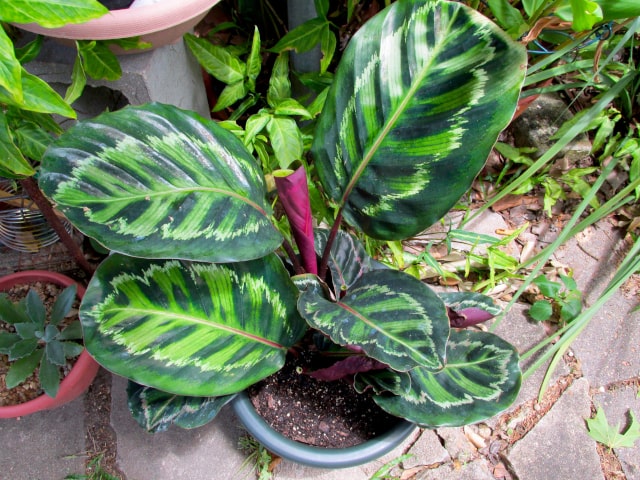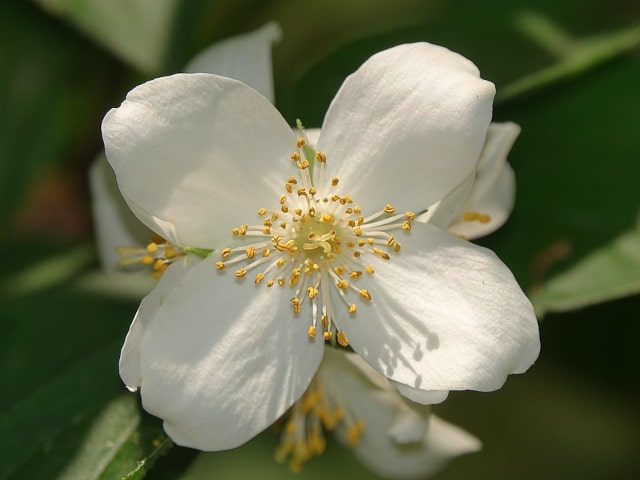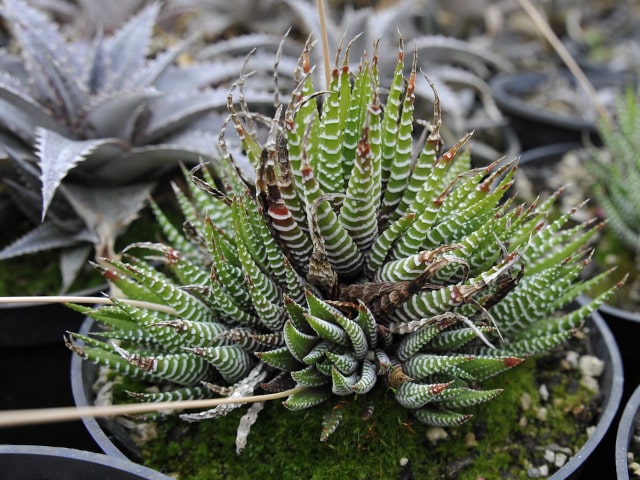
Rose Painted Calathea is a special variety of Calathea plants. It is famous for its tropical, patterned leaves. What makes this plant special are purplish colored undersides of the leaves. This is a gorgeous plant and one of the most popular Calathea varieties to grow in your home.
Just like other Calathea varieties, Rose Painted Calathea requires a specific care regime. This is the only way to make your plant thrive. A good thing about this variety is that it is relatively undemanding, which cannot be said for all Calathea varieties. Another good thing about Rose Painted Calathea is that you can keep it on the balcony or patio, but only if the temperatures are high enough. These plants require warmth so this is something you need to keep in mind.
Rose Painted Calathea: Basic Facts
This plant originates from Brazil. It is known under the name Rose Painted Calathea, though its botanical name is Calathea Roseopicta. This beautiful plant can usually grow to about 20 inches (50 cm) or even more. Some Rose Painted Calathea plants are known to be around 30 inches in height.
It is important to know that this plant is NOT toxic to pets (cats and dogs) so you can keep it in your home even if you have pets.
Rose Painted Calathea has gorgeous foliage, which is one of the reasons why people keep it in their homes. The leaves are elliptic and green, with pink stripes starting on the mid-rib. The mid-rib itself is also pinkish in color. This pink color will turn white when the plant matures. The leaves fold up slightly during the night time. The foliage typically grows at the top of the stalks.
Keep in mind that this variety of Calathea rarely flowers indoors. If it does, the flowers appear in summer and are very small, white in purple in colors. The flowers are not particularly showy but they are still beautiful.
Care Tips for Rose Painted Calathea
Perhaps the most important thing to remember about the Rose Painted Calathea is to never position it near clod drafts. This can be very dangerous for your plant. Another important thing to keep in mind is that you need to position your plant away from direct sunlight. A shaded room would work best for your Rose Painted Calathea, especially if you can place your plant on a higher level (about the table height).
- Soil. The best soil for a Rose Painted Calathea is a peat-based potting mix. Make sure it's 2 parts peat and1 part perlite. This seems to work the best for these plants.
- Temperature. To make your Rose Painted Calathea thrive, make sure to keep it in the room that is about 65 to 75 degrees F in temperature (18 to 24 degrees Celsius). Never go below 60 degrees F (15 degrees Celsius) with this plant. Also, keep in mind that cold drafts and sudden temperature drops are very harmful for Rose Painted Calathea.
- Light. Your Rose Painted Calathea will enjoy bright but not direct light. The best placement is in a room with a north, east or west-facing windows.
- Watering. Your Rose Painted Calathea will prefer moist soil at all times but it should never sit in water. Make sure not to use hard water. Use tepid rain or distilled water for watering. After the growing season, in winter, make sure to water a bit less.
- Humidity. Humidity is very important for a Rose Painted Calathea, just like with other varieties of Calathea plants. You need to provide your plant with plenty of humidity. Misting leaves may help a little but you may need to invest into a humidifier to truly provide your Rose Painted Calathea with everything it needs when it comes to humidity.
- Fertilizer. You need to fertilize your Rose Painted Calathea with a balanced diluted solution. Make sure to feed your plant every two weeks during the growing season (from April to early October).
- Repotting and Propagation. You should repot your Rose Painted Calathea once in every two years. The best time to do it is during spring. If the roots have taken all the room with the current pot, repot it in a slightly larger pot but don't use a huge one. Propagation should be done at the same time as repotting. It is best done through division. Once you pot the divided plants do not over-water them until they develop a new growth.
Common Problems
There are some common problems that Rose Painted Calathea plants face. Here are the quick solutions to these problems:
- Curling leaves with spots. If this happens, it is a sign that you might be under-watering your plant. Check out the soil: if it's dry, then you need to water more. You need to be consistent with keeping the soil constantly moist.
- Leaves dropping. This may be a sign that the air is too dry and that your plant is not getting enough humidity. Make sure to increase the humidity levels around the plant.
- Leaves have brown tips. Again, the main cause of this is dry air and lack of humidity. Make sure to increase the humidity levels around the plant.
- Limp stems. This may happen if you are watering too much during the winter. Similarly, it can happen if you keep your plant in low temperatures. Make sure to water your Rose Painted Calathea properly and to keep it at warm temperatures.
Photo credit: PINKE




0 Comments